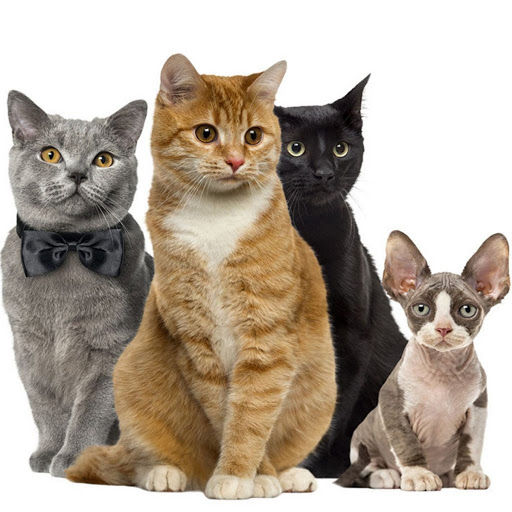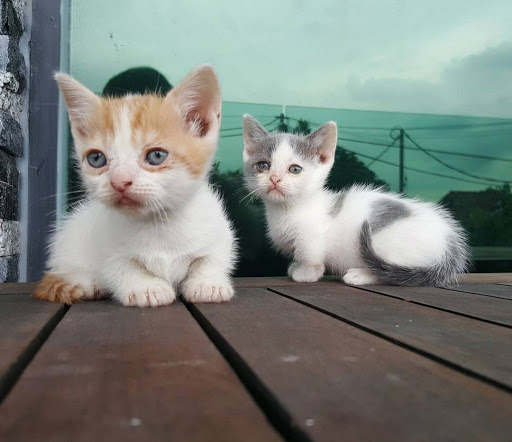Did you know that there are Dwarf Cats? Yes, among the various breeds of domesticated felines that can be found in the world, there are some that are very small in size, but the case of dwarf cats is very different from that, because it is a pathological condition that prevents them from grow. We invite you to read this article so you can find out all the details.

Dwarf Cat Breeds
Like many other conditions, it's all in the genes. There is in some breeds of cats a recessive type gene that produces the condition of dwarfism. This type of pathology normally produces osteochondrodysplasia, which causes abnormal growth of your bones and cartilage. This condition results in dwarfism in cats.
This condition causes the body of cats not to develop normally. That is, the cat's bone system does not form in a proportionate way. We will be able to observe that their nose, jaw and head may be larger than usual, or they have malformed teeth. Another observable characteristic is that the body tends to curve. This is a consequence of the fact that the weight of the other parts of the body is excessive for their size.
Another condition that cats can present and that produces their dwarfism is hyposomatotropism. This is an imbalance in the cat's growth hormone, which turns out to be a consequence of an abnormality in its pituitary gland.
These conditions have the effect of producing abnormalities in the bone structure, slowness and little lightness in cats. Because they are conditions and not diseases, they have no remedy.
But this has not stopped being taken advantage of by cat breeders, who have been able to use this gene to cross cats so that the recessive gene becomes a dominant gene, and with it, achieve the existence of new breeds. that would lead to more sales of this class of pets.
Examples of Dwarf Cat Breeds
The first known breed of dwarf cat was the Munchkin. It was obtained after many crosses of cats in which there truly was a singularity in the genetic code.
This breed has been the basis thanks to which other breeds of dwarf cats that are known today have been created, since it was the first in which breeders managed to make the recessive gene for dwarfism dominant.
Thanks to the Munchkin, it was possible for other races to emerge, such as the following:
Sphynx: It is the result of the crossing of a Munchkin breed cat and a Sphynx cat. Characteristics of this breed are that they do not have hair and the front legs are smaller than the back ones.
Dwelf: It is obtained by crossing three cups of cats that are a Munchkin, a Sphynix and an American Curl. As with the Sphynix, they have the particularity that their hind legs are larger than their front legs and their tail is shaped like a stick.
Genetta: It was obtained in 2006 and turns out to be the product of a cross between three cat breeds, which are a Munchkin, a Bengal and a Savannah. Its peculiarities are that it has small legs, a normal-sized snout and body, and short fur.
Lambkin: He is the product of a cross between a Munchkin cat and a curly-haired Selkirk Rex cat. It is one of the most commercialized dwarf cat breeds, because they have light-colored eyes and their unique coat, which makes them resemble a cotton ball.
Combinations in cat breeds and ethics
Currently, there is a great deal of discussion regarding these mutations caused by breeders, since they have been shown to influence the health of these animals and decrease their quality of life. There are even people who have described these practices as a form of animal abuse. But agreements have not yet been reached on the subject and as long as they are not prohibited and continue to be a profitable business, breeders will continue to practice them.
Most specialized veterinarians have agreed that it is a serious mistake to cross breeds of cats. Although not in all cases they consider that there is animal abuse.
The existence of experiments on cats is not recent. Already since the last century in England and Russia the dwarfism gene had appeared for the first time in cat breeds. This was the product of different mutations caused by the increase in people who wanted a very small cat as a pet, so it has been the market that has determined the existence of this practice.
Small Natural Size in Cat Breeds
Despite the existence of cat breeds that have been genetically manipulated to be smaller in size, it is possible to find that there are cat breeds that are naturally smaller in size. However, they have a balanced body development. Consequently, it cannot be said that they are dwarf cats, but rather small cats.
The great difference is that, at the level of the races, the dwarf cats These are cases of genetic mutations due to the manipulation of breeders, while small breeds of cats have their origin in natural causes. But it is true that small cat breeds are not extremely small, but rather smaller than the size of an average cat.
A typical case is that of the Siamese breed cats, because they are normally smaller than the normal size of cats, but if we observe them, their body and their growth will be perfectly proportioned, because they are not the product of a induced genetic mutation.
If you liked this article, we recommend that you read:

